Shaker Artists Leave Their Marks
Senior artists opt to create murals as their senior project, leaving their legacy on the walls of the high school
When students returned to school after a long summer break, they found that the familiar blue lockers mural across from the small auditorium had been covered by white paint to match the rest of the hallway.
The high school’s walls are covered in colorful murals painted for senior projects, and each year at least one new one brightens the plain walls above the lockers.
“I think displaying artistic talent is motivation,” said Katelyn Diemand-Yauman, a new Art Exploration teacher at the high school. “Leaving your mark, having pride in something. Also being able to choose to do something with their interests and what inspires them.”
[ngg_images source=”galleries” container_ids=”28″ display_type=”photocrati-nextgen_basic_slideshow” gallery_width=”320″ gallery_height=”240″ cycle_effect=”fade” cycle_interval=”10″ show_thumbnail_link=”1″ thumbnail_link_text=”[Show picture list]” order_by=”sortorder” order_direction=”ASC” returns=”included” maximum_entity_count=”500″]
John Homans, a Shaker alumnus who painted the Shaker vs. University School lacrosse mural in 1991, said that he wanted to memorialize the start of the lacrosse team at Shaker because he was a member of the original team.
“I always loved the fact that there were paintings all over the school,” said Homans. “Different paintings, you know? Different people, different things that were all very unique and different, and I’ve always loved that about the school.”
Students have their favorites. Junior Natalily Kyremes-Parks’ favorite is the mural featuring portraits of notable women through the ages, which was painted in 2017 by Jenny Feng. “It shows powerful women from all different backgrounds who were ‘rebellious’ because they stood up for what was right,” Kryemes-Parks said. The painting depicts Wu Zetian, Elizabeth I, Rosa Parks and Malala Yousafzai. “I think this one really stands out to girls in high school, ’cause when they stood up for what was right, a lot of them were not much older than us.”
Diemand-Yauman said the murals add color, which “makes everything brighter and more interesting visually.”
The process of creating a mural includes sketching, figuring out a location, going to the senior project approval committee, making sure it’s proportional, tracing and, finally, painting.
Homans said that he thought the murals represented diversity. “Diversity of style, diversity of thought, diversity of inspiration,” he said.
So have students ever defaced the murals like they do to the desks, the bathroom stalls, and the walls of classrooms? Or is it an unspoken rule among the students that you don’t vandalize the paintings on the walls?
“At one point someone had vandalized the painting of Jim Morrison, which was on the north side of the high school” above the planetarium on the second floor, Homans said. “Someone had taken a black marker and scribbled out his face, and I remember being mad about that.”
The blue lockers mural was prominent and greeted students, staff and visitors who entered the high school through the Large Auditorium doors. Even though it blended into the hall, students noticed when it was gone.
“It was a plaster wall that had been painted, but uh given it’s location a couple of things just inadvertently smacked into the wall and ended up punching some holes in it,” said Principal Jonathan Kuehnle. He said that they had re-plastered many times, but it didn’t hold up, and the school decided to take the plaster down and build a stronger wall.
The last hole in the mural was from a student who lost their footing and who’s elbow reopened an existing weak point in the wall.
“It makes me sad. It does have to happen at some point. Although, it is like a historical record,” Diemand-Yauman said.
“I’d be frustrated” if murals were covered up, said Homans, “because that would mean that it could happen to anybody who’s got their art and legacy on the wall. It would be disappointing to learn that someone’s art and legacy that represents the school and the student body would be removed or covered up.”
Journalism I students Annika Jankowsky, Avery Blaszak and Bess Von Der Heydt contributed reporting.
Comment using your Facebook, Yahoo, AOL or Hotmail account
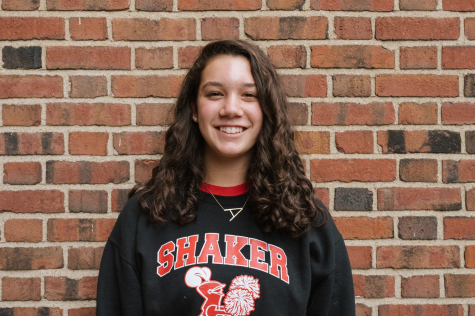

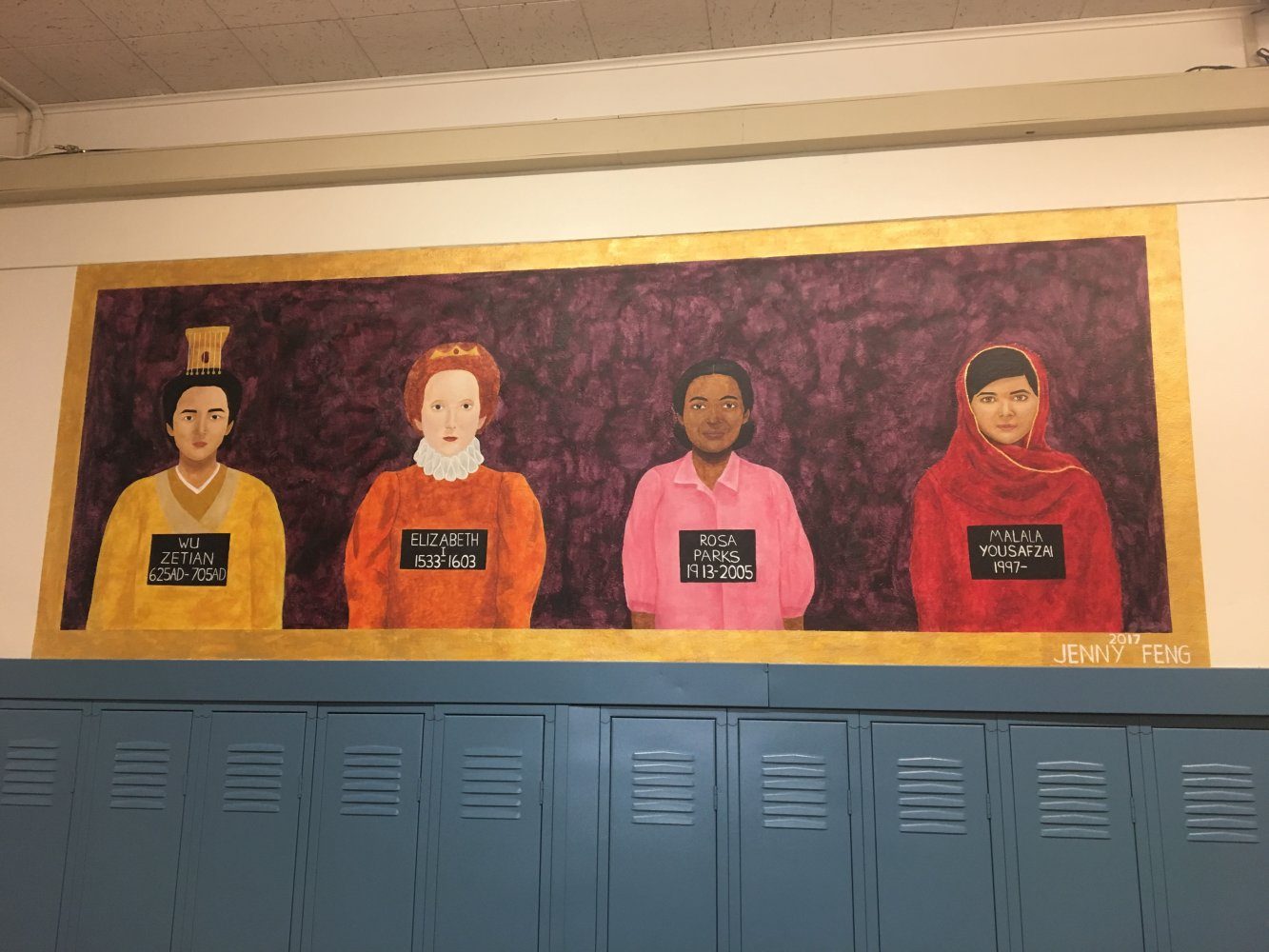

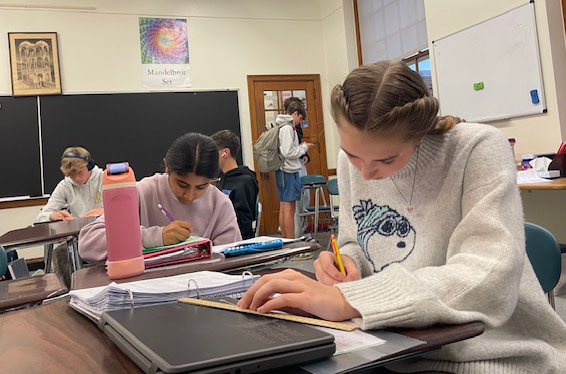

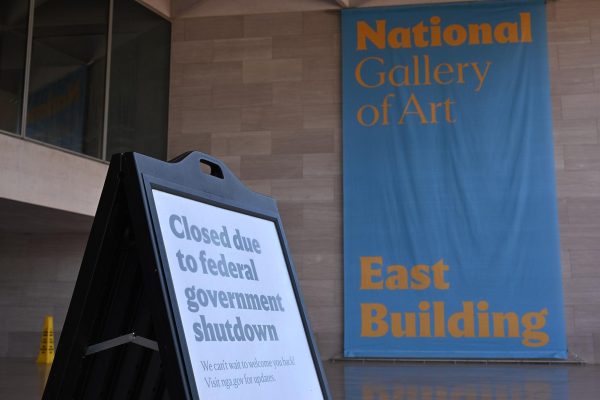
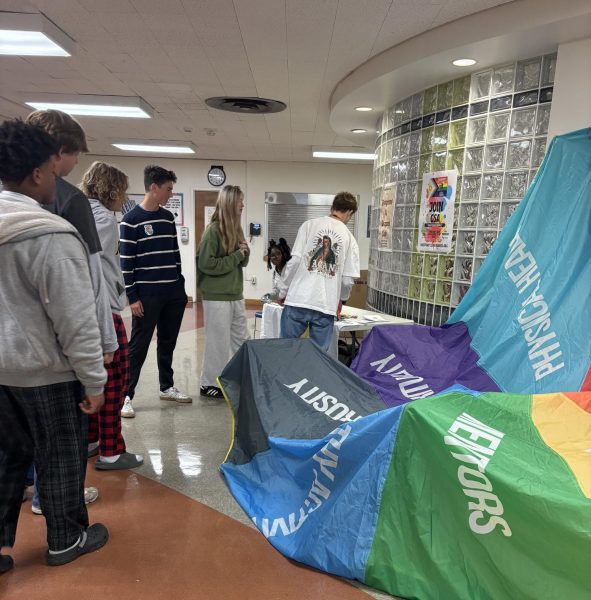
A Loyal Shakerite Reader | Sep 8, 2017 at 4:30 pm
Hello!
I’m a big fan of the Shakerite’s writing, and, as a freshman at an area high school (not Shaker), I commend your professionalism and consistency.
However, this article includes several basic grammatical mistakes that are usually addressed in middle school English classes, if not earlier. While I don’t mean to condemn your writing at all, I do want to draw your attention to these issues and encourage you to really focus on grammatical editing for your future stories.
First of all, you quote your principal, Mr. Kuehnle, as using the phrase “given it’s location”. “It’s,” when spelled with an apostrophe between the T and the S, is a contraction meaning “it is”. The possessive form of the word is “its”. You should use “given its location”.
Secondly, you state that there were several holes in the locker mural, and that the most recent came from “a student who lost their footing and who’s elbow reopened an existing weak point”. Similar to the “its”/”it’s” issue, you have used the wrong form of a word. “Who’s,” with an apostrophe between the O and the S, is a contraction meaning “who is”; you use this form correctly in the last paragraph (” ‘it could happen to anybody who’s got their art and legacy on the wall.’ “). The possessive form of this word is “whose”. Here, you should say “a student who lost their footing and whose elbow reopened an existing weak point”.
While I don’t mean to seem to attack you, as I am a very avid fan of your coverage, these are both very common mistakes, and they are simple to fix. And more importantly, they are errors that simply should not be made. The distinction between “it’s” and “its” is something every writer, of any caliber, should know; the same goes for the distinction between “who’s” and “whose”. I have no doubt you know the difference. It seems to me that letting these slip through into the final article is an issue more of laziness than ignorance or anything else.
I would like to reiterate that this is in no way a criticism of “The Shakerite”. You publish a fantastic high school newspaper, of extremely high quality. You’re held to rigorous standards, but you meet those standards well, generally.
I only have a problem since these are such basic mistakes. Making them is fine, but there is no way that they should slip through during the editing process. I highly recommend reminding your staff to keep a closer watch out for this!
Again, thank you for your excellent news coverage of the Shaker scene. Despite the fact that I’m not a Shaker student, I enjoy reading this daily for the quality of reporting. I commend you for your impartiality on controversial issues that the writers may feel strongly about, and I encourage you to keep up the excellent work!
From,
A Loyal Reader